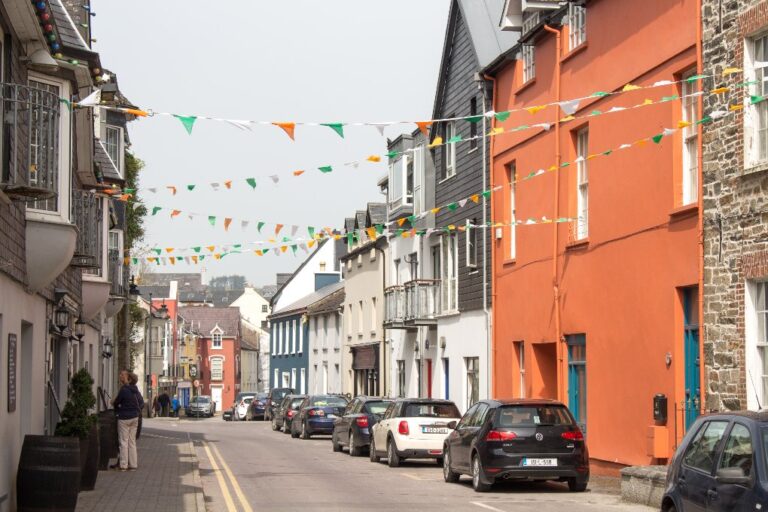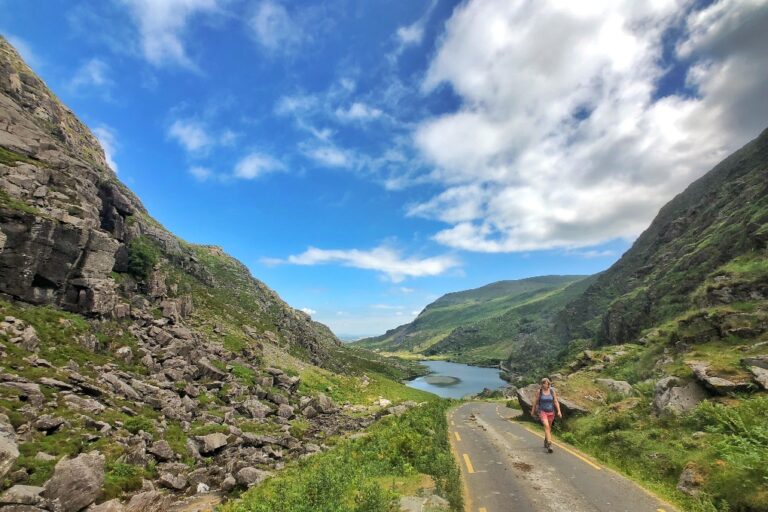Scotland vs. Ireland (2024): Tourist and Expat Guide
* * *
The countries of Scotland and Ireland are often confused by those who are not familiar with them. They are geographically and culturally similar in many ways, from an outside perspective at least. Once you begin to learn the differences between Scotland vs. Ireland, you will be surprised to find out just how different they truly are!
When you are trying to decide whether to visit or move to Scotland or Ireland, there are quite a few things to familiarize yourself with from the geography, food, and costs to cultural and political differences.
As someone who has lived in Ireland and had many close friends and family members live in Scotland to compare differences, here is what you need to know when choosing between the two countries.
Differences Between Scotland and Ireland
Scotland and Ireland, though sharing many cultural similarities, have distinct characteristics and differences as well. Scotland is known for its rugged landscapes, historic castles, and the infamous Loch Ness. The country boasts a rich cultural heritage, including the Highland Games and traditional kilts.
On the other hand, Ireland is renowned for its lush greenery, ancient ruins like the Cliffs of Moher, and vibrant cities like Dublin. Irish culture is deeply rooted in folklore, music, and dance, with traditions such as Gaelic sports adding to its uniqueness.
While both offer picturesque scenery and warm hospitality, Scotland’s emphasis is on kilts and bagpipes, which contrasts with Ireland’s focus on lively pubs, traditional folk music, and its connection to Celtic mythology.
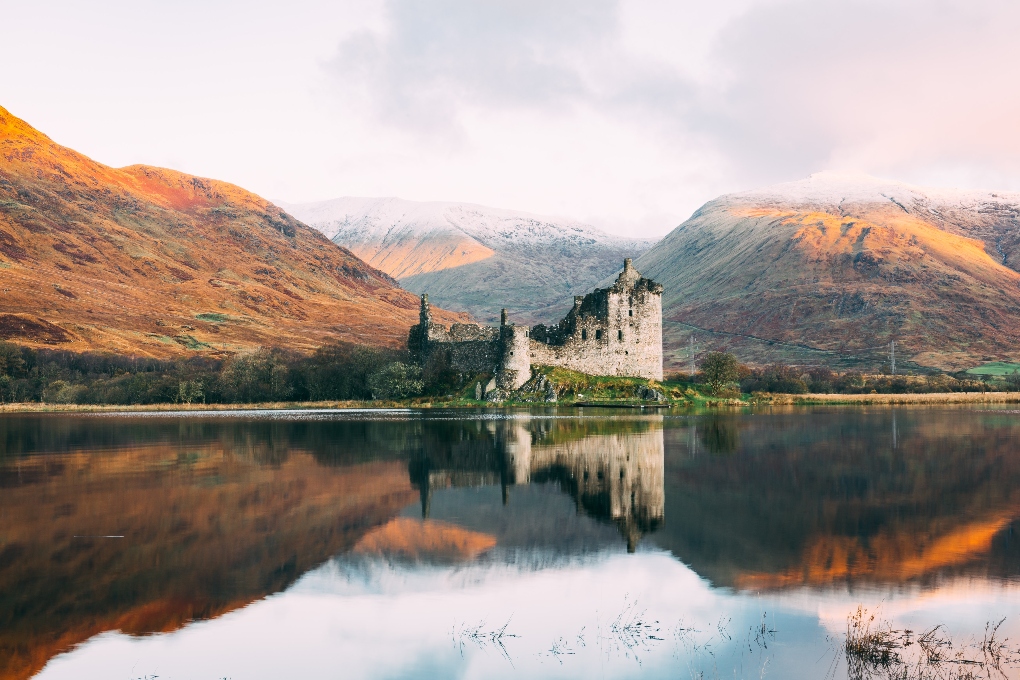
Is Scotland Better Than Ireland?
Both Scotland and Ireland have distinct similarities and distinct differences. When choosing Scotland over Ireland you will have to take into consideration what you are looking for. If you are looking for more dramatic and varied landscapes and nature, Scotland might be better for you. If you are looking for rich culture and entertainment, Ireland might have slightly more to offer.
How Are the Scottish Different From the Irish?
The Scottish are more a mixture of different groups such as Gaelic and Brythonic Celtic, Anglo-Saxon, and Norse whereas the Irish are more homogenously Gaelic Celtic.
The Irish are majority Catholic whereas in Scotland the predominant Christian denomination is the Church of Scotland, followed by Roman Catholicism
Brief History of Scotland and Ireland
Both the Scottish and the Irish have a culture that is heavily influenced by the English. Both Scotland and Ireland were once part of the British kingdom. In 1922, Ireland gained complete independence from England and built its own state.
Scotland and Northern Ireland are still part of the British monarchy and thus the Scottish tend to continue to be more heavily influenced by British culture.
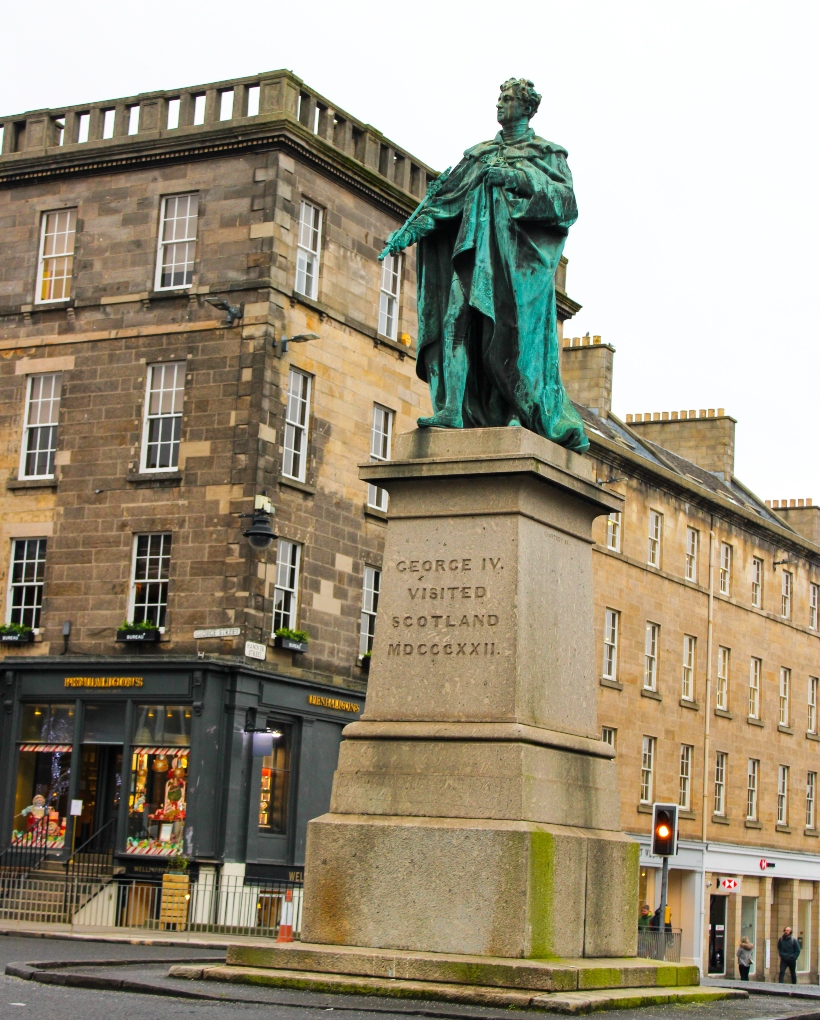
Are Scotland and Ireland Similar?
Scotland and Ireland share many similarities. They both have ties to and influence from the Celtic people who settled in each land. They both have been governed by and made attempts to claim their own independence from the UK as well. In terms of land, the two countries have a similar climate and terrain with striking landscapes, though there are still differences in both.
The love for hearty and comforting cuisine, featuring dishes like haggis in Scotland and Irish stew in Ireland, is also similar in these nations. Both places also have a rich history, marked by ancient castles, historical sites, and a deep connection to Celtic traditions. Overall, the shared Celtic roots, stunning scenery, and cultural warmth create a sense of kinship between Scotland and Ireland.
Scotland vs Ireland Vacation
Both Scotland and Ireland are wonderful countries to visit and vacation in. Each country has friendly people, pub culture, interesting foods, and gorgeous scenery and sites to tour. There are some differences between the two countries when making a choice on which to visit as a tourist.
PSST… still looking for accommodation in Scotland or Ireland?
👇🏽 Compare pricing and adjust filters to find your perfect stay using my favorite map tool below.

Getting to Scotland or Ireland
Getting to Scotland or Ireland is relatively straightforward, with both countries well-connected by air and sea.
Both have major international airports, such as Edinburgh and Glasgow in Scotland, and Dublin and Shannon in Ireland, which are the main way to arrive in either country. Direct flights from various global locations make air travel convenient.
Additionally, efficient train and bus networks provide accessible transportation within both countries. Or, if you prefer a scenic route, ferries connect certain coastal areas.
Top Sites to See in Scotland and Ireland
The sites and scenery are incredible in both countries, the difference being Scotland has more dramatic coastlines and mountains and Ireland tends to have more popular historic sites to visit and more popular tourist destinations.
The best sites to see in Scotland include:
- The Book of Kells at Trinity College Dublin
- The Blarney Stone and Castle
- Glendalough Monastic City
- The Guinness Storehouse
- The Rock of Cashel (group of medieval buildings)
- The Temple Bar in Dublin
- Dublin Castle
- Kilkenny Castle
- Kilmainham Gaol (a famous prison in Dublin)

Top cities on an Ireland vacation:
The cities are always a highlight when visiting a new country. The top cities in Ireland are of course the capital, Dublin. Dublin is always bustling and constantly has events, live performances, and top-tier nightlife. It has plenty of things to do and see from historic sites, museums, and pubs, and if you get out of the city there is some gorgeous nature such as the Wicklow Mountains and around Howth.
Galway and Cork are two other popular cities to visit in Ireland. They are smaller and have less going on than Dublin, but that means they are a bit less touristy as well. Plus, there are plenty of adorable villages across Ireland where you will find unique charm, interesting people, and a quaint lifestyle.
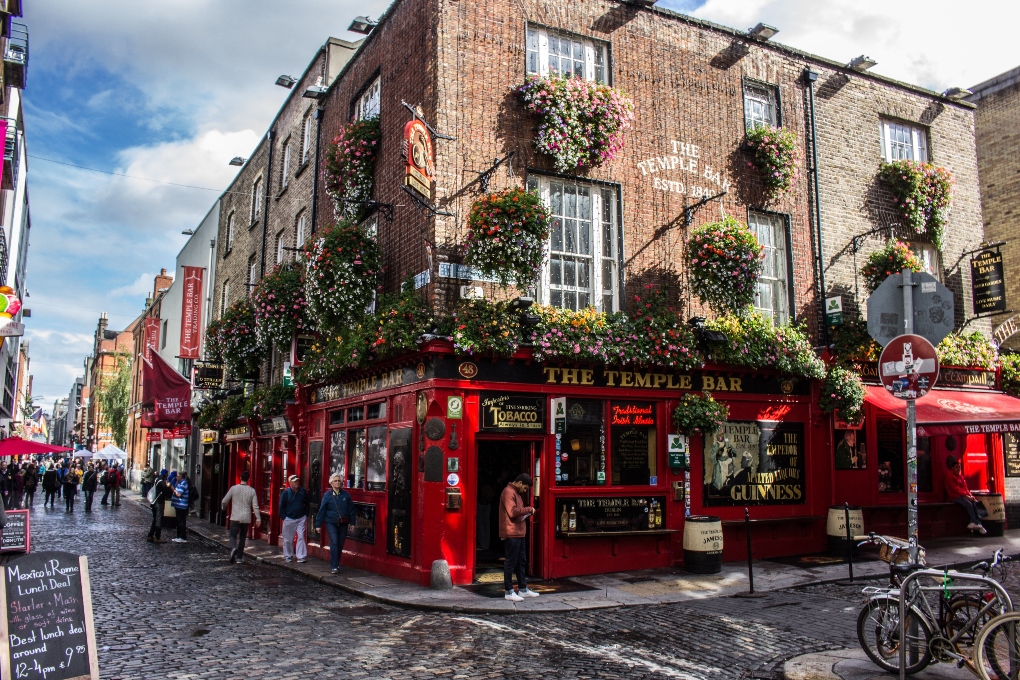
The best sites to see in Scotland include:
- St. Andrews (a university and golf course)
- Edinburgh Castle
- Calton Hill, Edinburgh
- Loch Ness and the Urquhart Castle
- National Museum of Scotland
- Glamis Castle
- Royal Yacht Britannia
- Ride the “Hogwarts Express” (Jacobite Express)

Top cities on a Scotland vacation:
As far as Scotland’s cities go, the capital of Edinburgh provides many of the top things to do and see. There is a lot of history in the city, plenty of fun bars, an adorable old town, and beautiful surrounding nature.
Glasgow is a vibrant and fun-filled city that makes for a great weekend getaway. Dundee has seen a bit of a cultural revival in the past few years and is great for museum hopping. Or, you can explore quaint Scottish villages such as Crail.
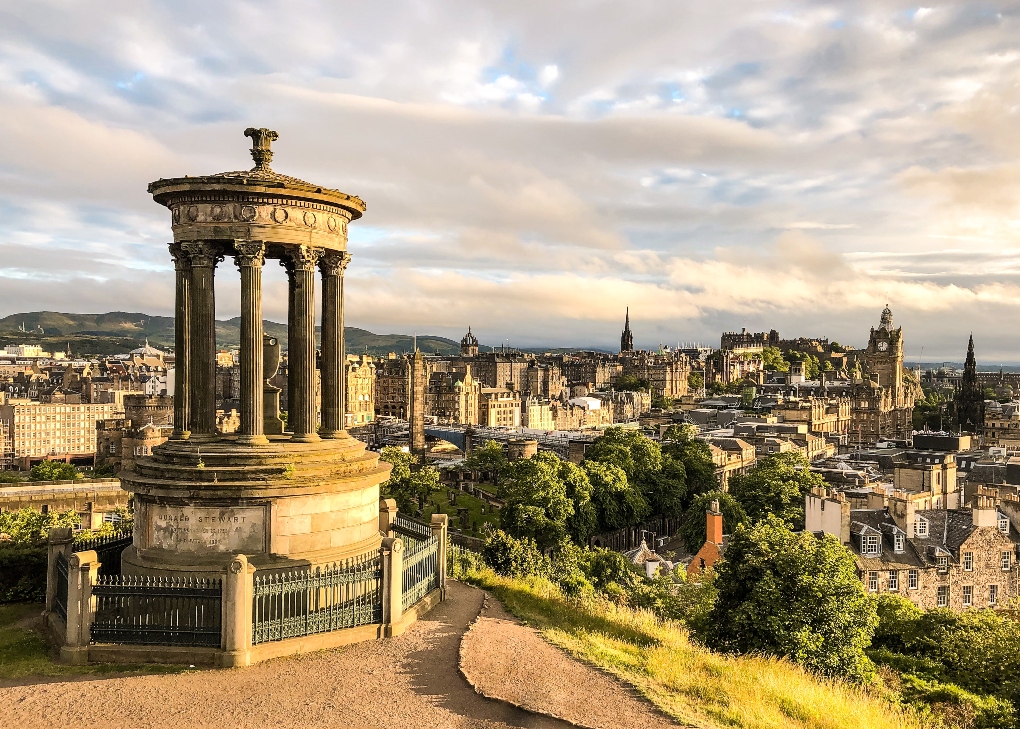
Beaches, Mountains, and Scenery
You will see some of the most incredible and bold natural formations in Scotland and Ireland, but Scotland does pull slightly ahead in this category. Scotland’s terrain tends to be a bit more rugged and dramatic, whereas Ireland still has dramatic features, but as a whole, it has more open spaces and greenery.
Popular Scenery in Ireland:
- Cliffs of Moher
- Ring of Kerry and Kenmare, Ireland
- Gap of Dunloe
- The Wicklow Mountains
- Powerscourt Waterfall
- The Skellig Islands
- The Aran Islands
- Doolin Cave
- Inchydoney Beach
- Banna Strand Beach

In Ireland, there is plenty of hiking, climbing, biking, and even surfing opportunities! While the terrain might not be AS dramatic as Scotland’s – it still has some pretty incredible features.
Popular Scenery in Scotland:
- Loch Ness
- Isle of Skye
- Highlands
- Glen Coe
- Glenfinnan
- Fingal’s Cave
- An Lochan Uaine (The Green Lochan)
- Rockcliffe Beach

Scotland certainly has more varied terrain than Ireland. It has many incredibly beautiful islands as well. You can also find any number of outdoor activities to participate in, or even simply hopping on a train across the country will provide some incredible views and scenery!
So, Is It Better to Visit Ireland or Scotland?
Choosing between Ireland and Scotland depends on your preferences and interests. If you’re drawn to lush landscapes, lively pubs with traditional music, and a deep connection to Celtic culture, Ireland might be the better choice.
On the other hand, if you’re intrigued by rugged terrains, historic castles, and the mystique of kilts and bagpipes, Scotland could be the ideal destination.
Both countries offer rich histories, warm hospitality, and unique experiences. Whether you prefer the vibrant cities of Ireland or the picturesque Highlands of Scotland, each destination has its own charm, making it a matter of personal taste.
Weather in Scotland vs Ireland
The weather in Scotland and Ireland are similar as both counties lie on relatively the same latitude. Both countries have cool and mild climates with a lot of cloud coverage and rain year-round.
Scotland has more extreme weather in comparison to Ireland. It gets colder during the winter and when the weather is bad, it will be worse in Scotland than in Ireland. Scotland gets some snow, especially in remote areas of the Highlands and the Isle of Sky, and even has five ski resorts.
Winter
The coldest months in Scotland and Ireland are from November to February. The average maximum temperature in Scotland is usually below 47°F (8.3°C) with the coldest month ranging from 25°F(-3.8°C) to 38°F (3.3°C).
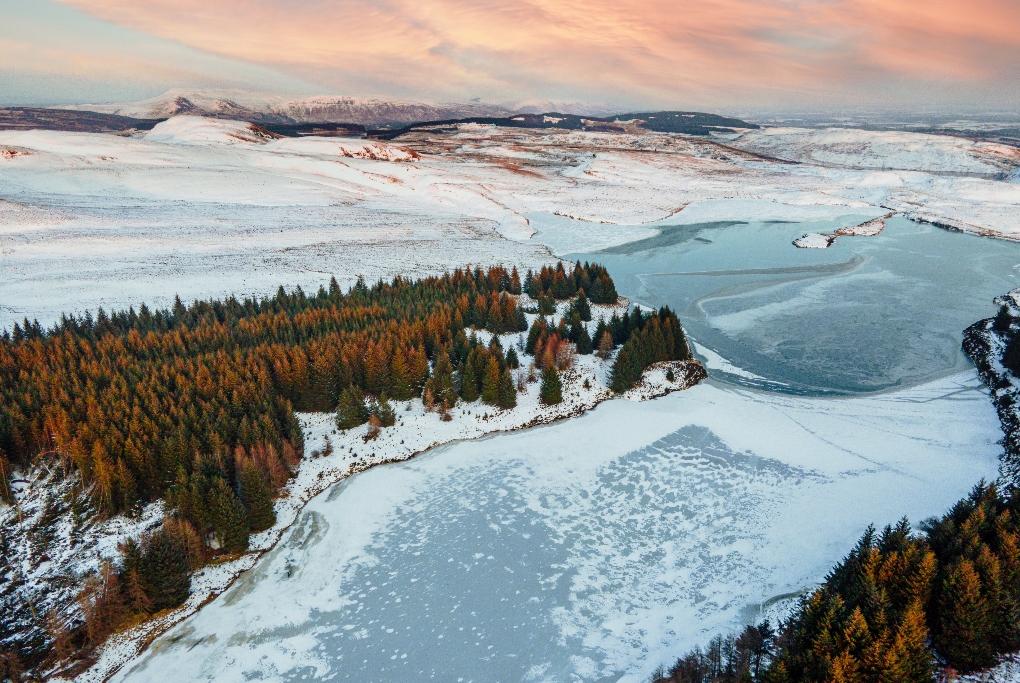
The average maximum temperature in Ireland in the winter is 51°F (10.6°C) with the coldest month ranging from approximately 38°F (3.3°C) to 47°F (8.3°C).
Summer
The warmest months in Scotland and Ireland are June to September. The summers in Scotland tend to get warm and muggy. The average maximum temperature in Scotland is around 76°F (24.4°C) with the hottest month ranging from approximately 67°F (19.4°C) to 85°F (29.4°C).
Summers in Ireland are comfortable and mild. The average maximum temperature in Ireland in the summer is around 63°F (17.2°C) with the hottest month ranging from approximately 54°F (12.2°C) to 66°F (18.9°C).
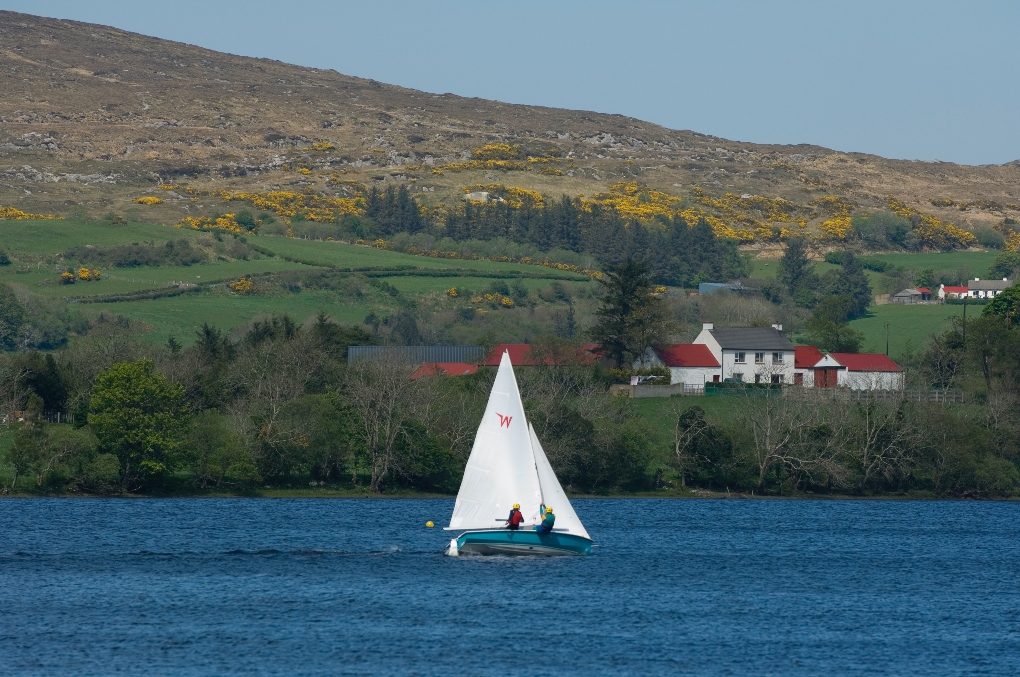
Rain
The wettest parts of Scotland experience an average of 250 days of rain per year, while the driest parts experience an average of 150 days of rain per year.
The wettest parts of Ireland experience an average of 225 days of rain per year (in parts of the west) and an average of 151 days of rain (along the east and southeast coasts) in the driest parts.>>> THESE are my absolute FAVORITE rain boots that I wore every day in Ireland!
Food
Scotland and Ireland share many similarities when it comes to their food. The food is very traditional European and pulls influences from England’s cuisine as well.
In Ireland, the basis of many dishes is potatoes and meat such as pork along with vegetables, seafood, and delicious bread. They are known for their beer and stews and popular dishes include Coddle, Sheperd’s Pie, Corned Beef and Cabbage, soda bread, and soups and stews galore!
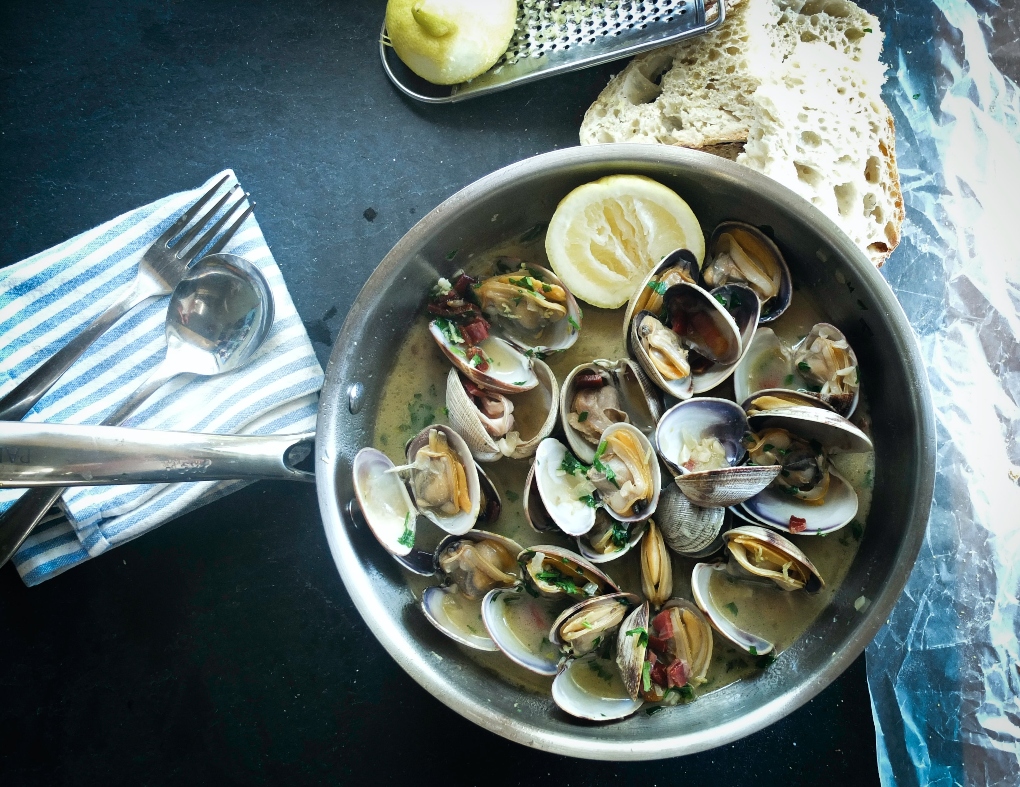
Scotland is famous for its haggis, Angus beef, and porridge, and many dishes are also based around meat and vegetables, often in soup form. Popular dishes include Cock-a-leekie, Cullen skink, Cranachan, and you will have to try a Mars bar!
Costs in Scotland vs Ireland
Costs are similar in Scotland vs Ireland, with Scotland being marginally cheaper overall.
Expect to budget approximately £148 ($184) per day for your Scotland vacation, calculated from the average expenses of fellow travelers. Per day you can expect to spend approximately £38 ($48) on meals, £38 ($47) on local transportation, and £143 ($178) on accommodations.
For a week-long trip for two people, the average cost is £2,069 ($2,577), covering accommodation, meals, local transportation, and sightseeing.
In Scotland, hotels can range from £38 ($47) to £152 ($190) on average per night, and B&Bs charge from £70 ($90) to £100 ($130) per night.
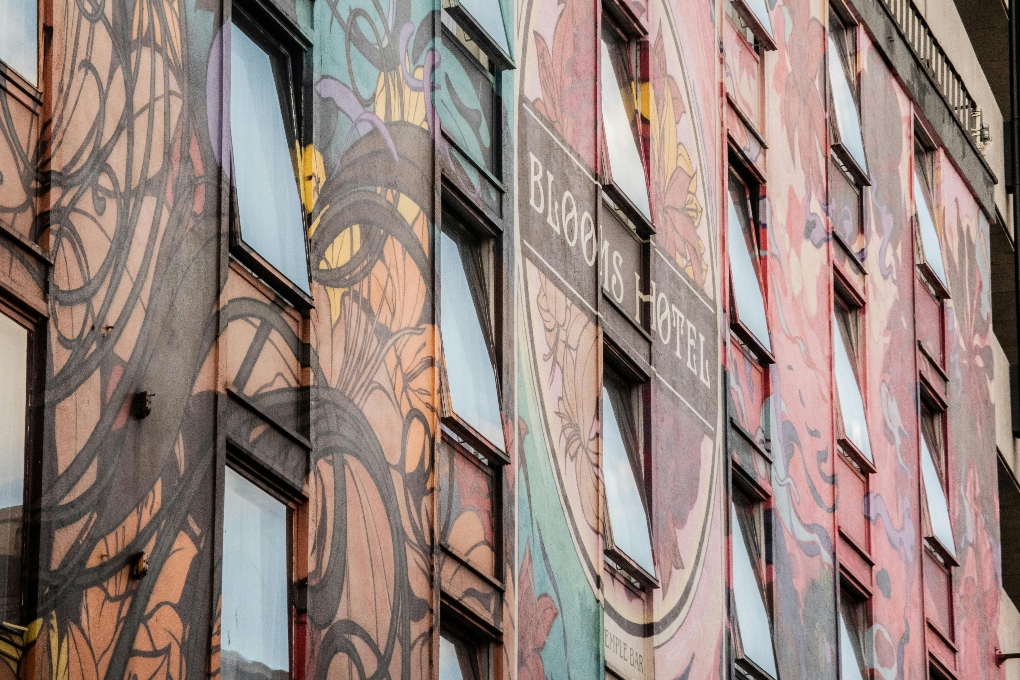
Prepare to spend approximately €238 ($260) per day for your Dublin vacation, calculated from the average expenses of fellow travelers. On average, per day you might spend around €49 ($52) on meals, €17 ($18) on local transportation, and €174 ($190) on accommodations per day.
For a week-long trip for two people, the average cost is €1,953 ($2,087), which includes accommodation, meals, local transportation, and sightseeing.
Ireland accommodation is much more varied, and generally more expensive, with hotels starting around €64 ($70) and going up to €319 ($350) per night in some areas. B&Bs tend to be more affordable than hotels in Ireland.
>>> Click here to search SCOTLAND accommodation
>>> Click here to search IRELAND accommodation
Driving and Public Transportation
Both countries have decent public transportation, especially in the major cities. However, in both countries, you will likely want to rent a car if you are looking to explore more rural areas or plan to do more adventuring between cities.
In both Scotland and Ireland, you will drive on the left-hand side of the road and will likely use a manual (stick-shift) car. Roundabouts are common in both countries as well, which can be confusing for visitors. For tips on how to drive in Ireland and Scotland – read this article.
Need to Rent a Car?
My go-to car rental service in Ireland or Scotland is Discover Cars. They compare prices across the leading car rental services to find you the lowest prices and best deals.
🚗 CLICK HERE TO SEARCH FOR YOUR RENTAL CAR
Public Transportation in Scotland
One of the best ways to get around Scotland quickly and cheaply is by train, plus you get fantastic views of the country. There are a few train operators in Scotland that cover most of the country and stop in the main cities and towns. The main train operator in Scotland is called ScotRail.
Traveling through Scotland by bus will be cheaper but slower. Many companies serve Scotland’s cities, with a number of intercity and cross-country routes available. Two of the big operators are Citylink and Stagecoach.
Buses are also the only mode of public transport on Scotland’s islands and there are some islands without any public transport, like Coll or Colonsay.

Public transportation in Scotland also includes combined train and ferry tickets along with transportation down to England. There are buses in most of the major cities (though it is usually easy enough to get around by foot) and Glasgow even has an underground rail system.
A bus ride in Scotland can range from around £2 to £20 (~$2.50 to $25) and a train ticket could start from around £7 to £35 (~$8.75 to $44) and go up from there, depending on how far you are going and how nice of a train. There are also quite a few options available for multi-day or multi-trip passes to save on your travel expenses.
Public Transportation in Ireland
Similar to Scotland, train travel will be faster but more expensive than traveling by bus, though both cover most of the major cities and towns across the country quite well. The bus system covers nearly every town in Ireland but is significantly slower, with Bus Éireann being the main bus line.

Ireland’s cities are also fairly walkable, and all of the major cities have a bus system along with the Irish Rail. Dublin has the most extensive public transportation system including a tram network (LUAS) and commuter rail system (DART).
A bus ride in Ireland can range from around €12 to €25 (£10 to £20) and a train ticket around €20 to €45 ($22 to $50). There are also a few options for multi-day or multi-trip passes, though fewer than in Scotland. The Leap Card is the best option for the cities.
If you want to experience more rural areas and gorgeous scenery such as the Gaps of Dunloe or Kenmare you will want to drive through Ireland.
Living in Scotland vs Ireland
Both countries are great to move to as an expat, in my opinion. They both have friendly people, gorgeous nature, and walkable and entertaining cities. The cost of living is relatively high for both countries, with Ireland typically being higher. However, there is plenty of economic opportunity and things for expats to explore in each.
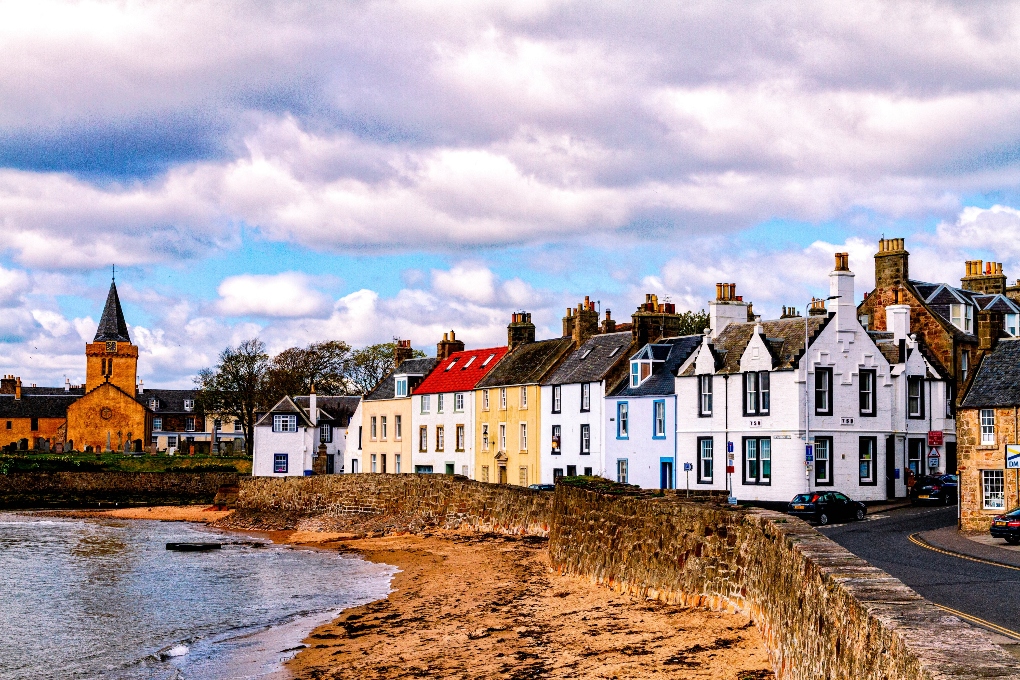
Scotland vs Ireland Economy
Both Ireland and Scotland have flourishing economies at the moment. Ireland’s job market currently has a greater emphasis on technology, pharmaceuticals, medical devices, life sciences, and agriculture. Whereas Scotland specializes in fishing, food and drink, forestry, oil and gas, renewable energy, and textiles. Both benefit from tourism as well.
Best Cities to Live In
Expats living in Ireland tend to live in the bigger cities of Dublin, Cork, and Galway where there is more to do in terms of pubs, events, job opportunities, nightlife, etc. For expats who want a slower pace of life, the quaint Irish town of Kinsale in County Cork is known for its restaurants and yachting marina. Or the coastal town of Westport has been noted as a great place to live, especially for those who like outdoor activities.
The best places to live in Scotland, and where expats tend to flock to, are the bigger cities of Edinburgh, Glasgow, Aberdeen, and Dundee. For those who enjoy outdoor activities, Killearn, Stirling is a great option, or Kilmacolm, Renfrewshire for a suburban choice.
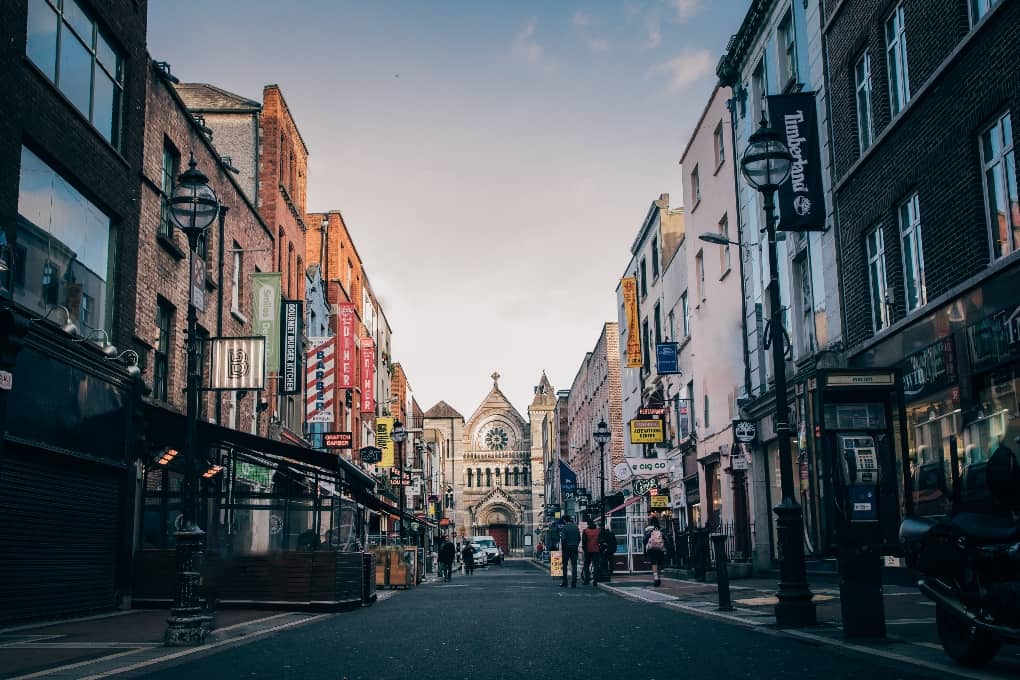
Cost of Living in Scotland vs Ireland
Unsurprisingly, the capitals are the most expensive places to live for both countries. The cost of living in Edinburgh (for a single person) averages £799 ($1,000) before rent, with rent for a one-bedroom apartment costing around £1,477 ($1,847) in the city center.
The cost of living in Dublin averages $1,092 (€1,192) before rent, with rent for a one-bedroom costing around €1,740 ($1,892) in the city center.
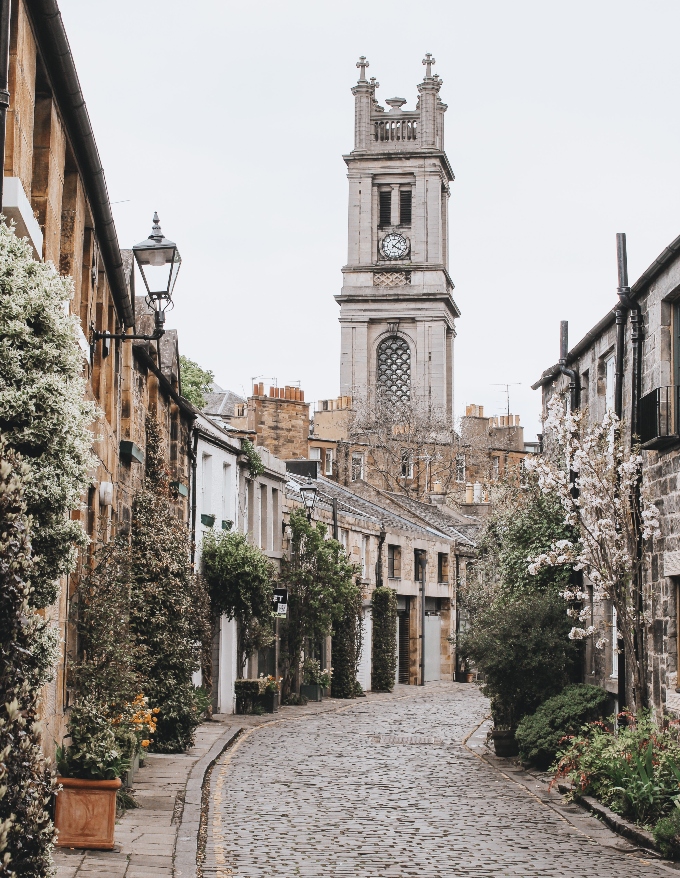
Safety
Both Scotland and Ireland as a whole are very safe countries. However, that is taking into account a mix of the cities and the countryside villages. You will of course run into more crime and safety concerns in the bigger cities than if you are exclusively out in nature or in the smaller cities of Ireland.
According to the 2023 Global Peace Index, Ireland is ranked as the 3rd most peaceful country and the United Kingdom is ranked 37th. Keep in mind, that includes cities such as London where crime is more prevalent.
Both of the countries’ capitals have higher rates of crime than smaller cities and have some neighborhoods to avoid. Even still, both Scotland and Ireland are completely safe for visitors and for expats.

❗Don’t forget to book your travel insurance❗
Even though both Scotland and Ireland are safe countries, you should always have insurance when traveling. I use and recommend SafetyWing for medical and travel insurance. It is affordable, reliable, and flexible insurance.
To purchase insurance directly from SafetyWing, CLICK HERE.
Studying Abroad in Ireland vs Scotland
I studied abroad in Ireland at Trinity College Dublin and had the absolute best time of my life! Not only was the school itself top-notch with plenty of activities, events, and societies (the Irish version of a school club) to join, but there was so much to see and do in and around Dublin that I never got bored.
Both countries have excellent academic systems. Some of the top universities in Ireland include:
- Trinity College Dublin (TCD)
- University College Dublin (UCD)
- University of Galway
- University College Cork (UCC)
Some of the top universities in Scotland include:
- University of Edinburgh
- University of Glasgow
- St. Andrews University
- University of Aberdeen
I had a friend who went to school full-time at St. Andrews University and she had many excellent stories of the prestige of classes along with unique traditions and events that happen throughout the year.
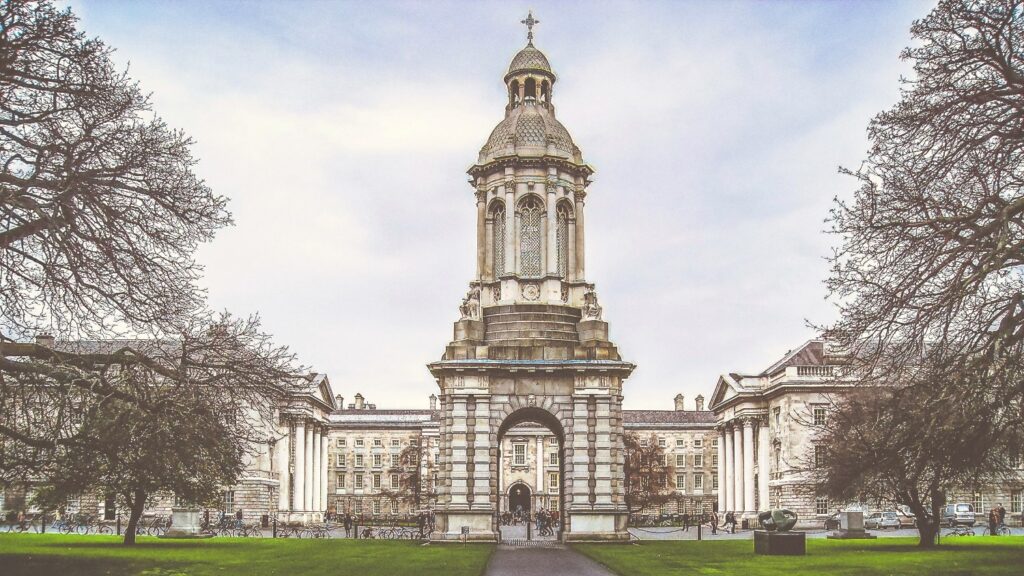
Which Is More Family-Friendly?
Both Ireland and Scotland are generally pretty family-friendly destinations. Ireland has many attractions that cater to families, such as interactive museums, outdoor activities, and family-friendly accommodations. The Irish culture, with its emphasis on community and friendliness, often makes families feel welcome.
I will say, that at least in the big cities, Ireland can feel like it has more of a party culture. Especially with how prevalent bars and clubs are, but this really shouldn’t affect you too much if you know where to stay and find alternative night-time activities.
>>> RELATED:
Top Things to Do in Dublin at Night
What to Do in Cork at Night
Similarly, Scotland has a lot to offer families, including historic castles, picturesque landscapes, and engaging museums. Cities like Edinburgh and Glasgow provide family-friendly activities, and the country’s emphasis on outdoor adventures can be exciting for families looking for active and educational experiences.
Ultimately, when you’re deciding between Ireland and Scotland, it will be up to your specific preferences, the interests of your family members, and the type of experiences you are seeking. Both countries provide a welcoming atmosphere for your family and kids to explore and enjoy.

More Differences Between Scotland and Ireland
- Ireland’s national currency is the euro | Scotland’s national currency is the pound sterling
- Ireland’s capital is Dublin | Scotland’s capital is Edinburgh
- Ireland has a population of 5.08 million | Scotland has a population of 5.5 million
- Dublin has a population of 1,256,000 | Edinburgh has a population of 548,206
- Ireland (the island) is 84,421 km2 (32,595 sq mi) and the Republic of Ireland is 70,273 km2 (27,133 sq mi) | Scotland is 77,933 km2 (30,090 sq mi)
- Ireland’s native language is Irish Gaelic | Scotland’s native language is Scottish Gaelic
- Ireland’s traditional dances include step dancing, jig dance, sean nós dancing, céilí dance, and Irish tap dancing | Scotland’s include Ceilidh dance, Highland dance, Scottish country dance, and Step dance
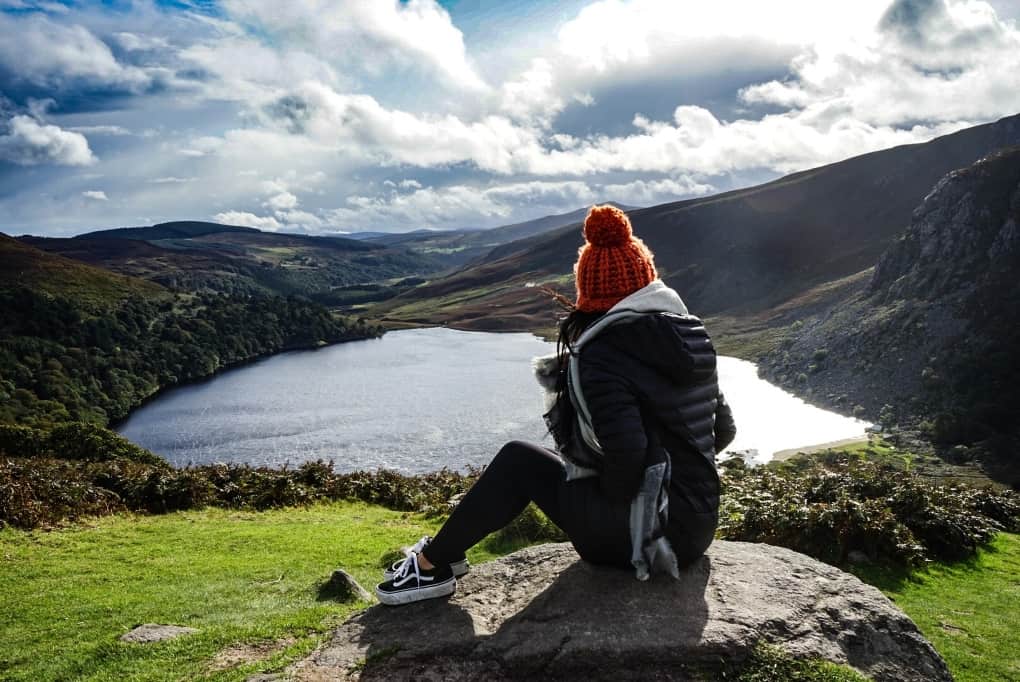
Conclusion: Ireland vs. Scotland
The debate on the differences between Scotland vs. Ireland and which is a better country to live in or to visit has been going on for ages. Ultimately, it is up to you and your preferences for which country you will connect with more. If you have the chance, visit both countries and decide for yourself which you like best!
Related Posts:
Things to Do in Dublin at Night
First-Time Flyers Guide and Checklist
Working Remotely Abroad for a U.S. Company
Looking for resources to use for your next trip or move abroad?
CLICK HERE for my favorite travel and expat tools!


